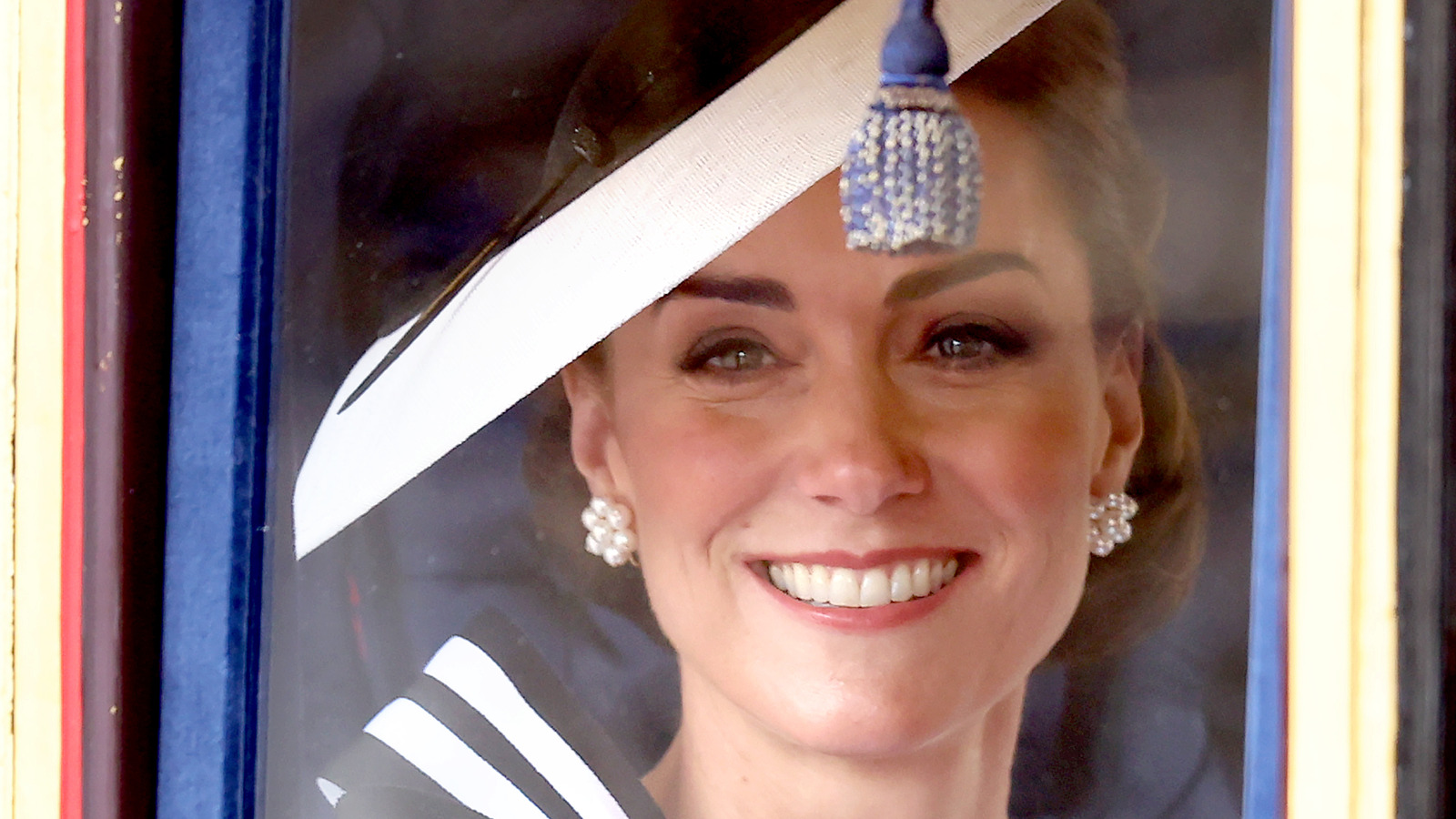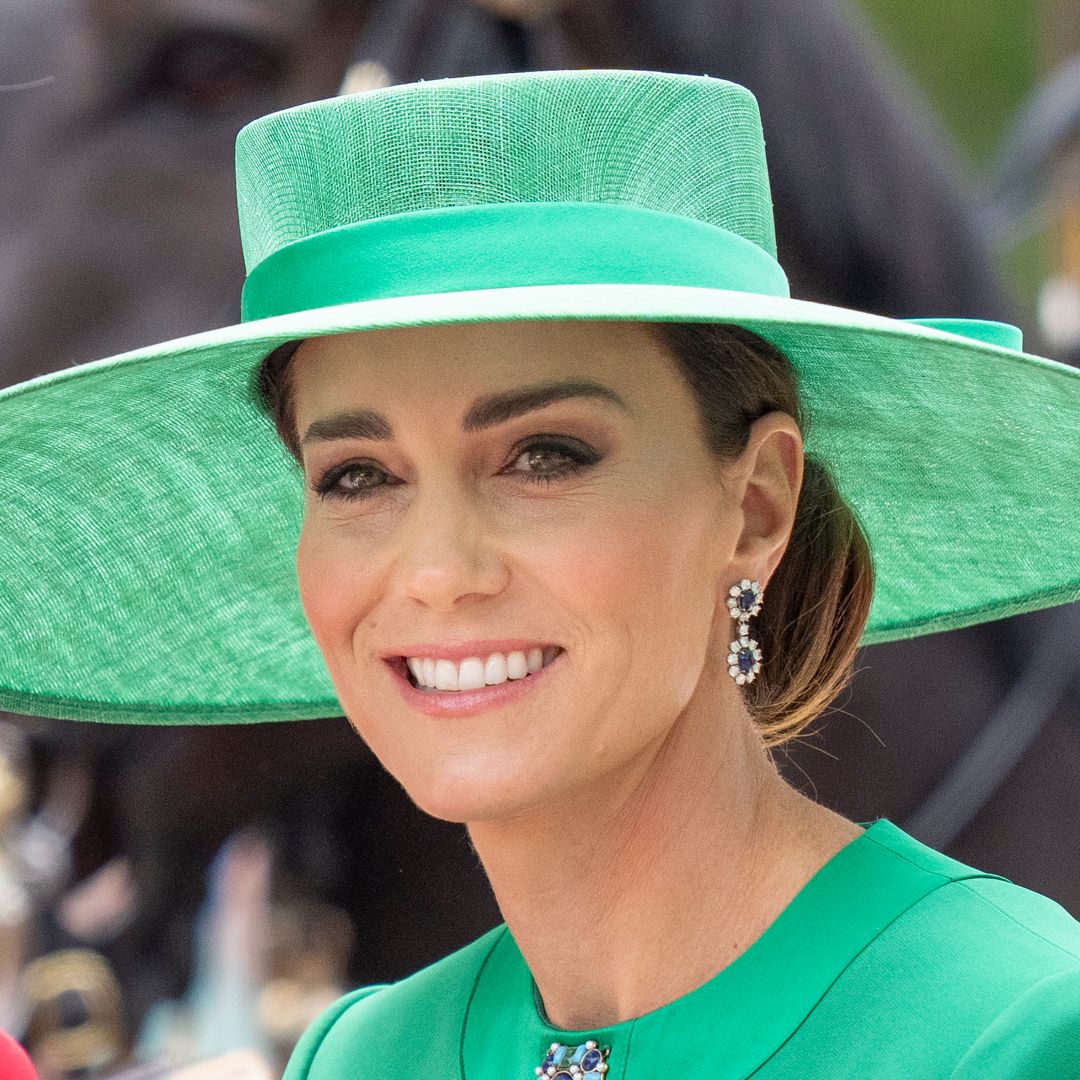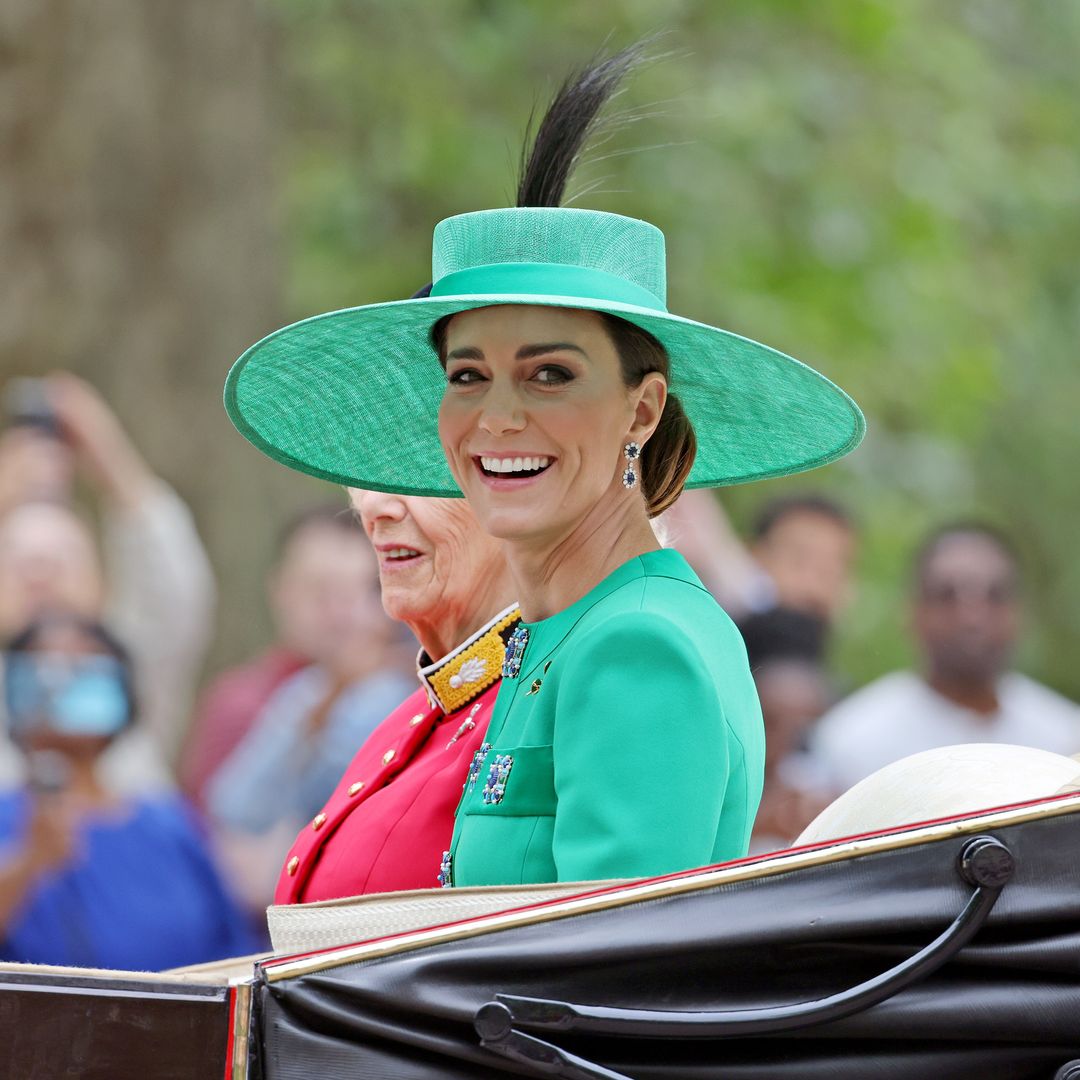Trooping The Colour 2024 Kate - A Look At The Grand Event
Every year, a truly splendid sight unfolds right there in London, a spectacle that just about captures the heart of a nation. It's that moment when the Household Division's regiments step out onto Horse Guards Parade, all to mark the official birthday of the reigning monarch. This isn't just any parade; it's a deep-rooted tradition, something that has been happening for a very, very long time, bringing together history, pomp, and a real sense of shared celebration. People gather, you know, waiting to see this amazing display of military precision and historical significance unfold right before their eyes.
This annual event, often held on a Saturday in June, is, in some respects, a living piece of history, a traditional observance that goes back over two and a half centuries. It's a time when more than a thousand parading soldiers, along with a couple of hundred horses, and hundreds of musicians, come together to perform a truly intricate military ceremony. You might be wondering, what's it all about? Well, it's pretty much a visual feast, a moment where the past and present blend, showing off the discipline and heritage of the armed forces in a way that feels very grand.
The term "Trooping the Colour" itself, actually, takes us back to a time before we had all our modern ways of communicating. Back then, each regiment’s flag, or 'colour,' had its own unique design, matching the uniform, and it was a way for soldiers to recognize their own unit. This whole weekend, for example, usually kicks off with this very ceremony, staged in full, and it’s a moment that draws folks from all over, eager to witness this long-standing custom. It’s a pretty big deal, really, a true highlight of the royal calendar, and something many look forward to seeing each year.
Table of Contents
- Who is Kate and Why is She Mentioned with Trooping the Colour?
- Kate's Personal Details and Background
- What Exactly is Trooping the Colour?
- How Did This Tradition Begin?
- When Does Trooping the Colour Happen?
- What Goes on During Trooping the Colour?
- Why is the "Colour" So Important?
- How Does "Trooping" Describe the Movement?
Who is Kate and Why is She Mentioned with Trooping the Colour?
When people talk about "Trooping the Colour 2024 Kate," they are, of course, referring to a well-known public figure often associated with royal events. However, the specific information provided for this discussion does not include any personal details or direct references to "Kate" in the context of Trooping the Colour. Therefore, any discussion about her specific involvement or presence at the 2024 event would be outside the scope of the given source material. It's like, we know the event happens, but the exact guest list or who attends isn't something we have details on from our current text, you know?
Kate's Personal Details and Background
As an expert analyst, it's crucial to stick to the facts given. The provided text, which serves as our main reference, does not contain any biographical information, personal details, or background about "Kate." Consequently, we cannot present a table of personal data for her based on the information we have. This isn't to say she isn't important, but rather that our source material simply doesn't cover that particular aspect, and we can't just make things up, can we?
What Exactly is Trooping the Colour?
So, what exactly is this whole "Trooping the Colour" thing? Well, it's basically a really old military ceremony and a big parade that happens in London every single year. It’s put on by the regiments of the Household Division, and its main purpose is to celebrate the official birthday of the reigning monarch. It’s a tradition that has been observed for over two hundred and sixty years, marking the sovereign's official birthday with quite a show, you see. It’s not just a march; it's a very specific, formal event that follows a long-established set of steps, almost like a play, but with real soldiers.
The core of the event involves regiments of the Household Division presenting their regimental flag, or "colour," to the monarch. This presentation, or "trooping," is a significant part of the ceremony. It’s a very visual way to honor the monarch's official birthday, and it involves a lot of people and animals moving together in a very precise way. You've got over a thousand soldiers, two hundred horses, and four hundred musicians all playing their part, making it quite a sight to behold. It’s pretty much a demonstration of military discipline and tradition, something that, honestly, is quite impressive to witness.
How Did This Tradition Begin?
The origins of "Trooping the Colour" go back to a time before our modern communication methods existed. Back then, each regiment’s flag, known as its "colour," was incredibly important. It had a unique design that matched the uniform, and it served as a vital rallying point for soldiers on the battlefield. Think about it: in the chaos of battle, seeing your regiment's colour was how you knew where your unit was. So, before a battle, the "colour" would be "trooped," or carried slowly past the soldiers, so everyone could recognize it. This practice ensured that every soldier knew their regimental flag, which was, quite literally, their guide. This historical practice, you know, eventually evolved into the ceremonial event we see today, a formal display of allegiance and identity, something that has been carried forward through the centuries.
This ceremonial act of carrying the colour through the ranks before battle became a tradition, and over time, it transformed into the grand annual parade we now observe. It's a way to keep that historical significance alive, even though its original purpose of identifying units on a battlefield is no longer necessary in the same way. The ceremony, basically, serves as a powerful reminder of military history and the role of the armed forces. It's a very formal and respectful way to honor both the monarch and the soldiers who serve, a practice that has, in a way, stood the test of time.
When Does Trooping the Colour Happen?
Trooping the Colour is an event that takes place annually, meaning it happens once every year. It’s always held on a Saturday in June, specifically chosen to mark the reigning monarch's official birthday. While the actual birthday of the monarch might fall on a different day, this ceremony provides a public and ceremonial way to celebrate it. It’s a consistent fixture in the royal calendar, a day that many people circle on their calendars, knowing they can expect this grand display. It’s pretty much a fixed point in the year, a reliable and much-anticipated tradition.
The weekend festivities, in some years, might begin on a Thursday with the full staging of Trooping the Colour, especially if it's the first time it's been fully staged since a major event like a pandemic. This annual timing ensures that the public has a regular opportunity to witness this historic event and participate in the celebration of the monarch's birthday. It’s a long-standing custom that, honestly, provides a sense of continuity and tradition for the country. The predictability of its timing is part of its charm, allowing people to plan their visits or viewing parties around it, you know.
What Goes on During Trooping the Colour?
During the Trooping the Colour ceremony, you'll see a truly impressive display of military might and precision. The event involves over 1,400 parading soldiers, all moving in perfect formation, along with 200 horses, which are also part of the procession. And let's not forget the 400 musicians who provide the stirring soundtrack to the entire event. It’s a massive undertaking, a very coordinated effort where every person and animal plays a crucial role. The soldiers, for instance, march with incredible discipline, their movements precise and synchronized, creating a truly captivating visual spectacle.
The core of the ceremony, as the name suggests, involves the "trooping" of the regimental "colour." This means the flag is carried down the ranks of soldiers, ensuring everyone sees it. It’s a moment of great significance, symbolizing the regiment's identity and allegiance. The entire event unfolds on Horse Guards Parade in London, a historic setting that adds to the grandeur. It’s a traditional observance, a military ceremony and parade that, honestly, feels like stepping back in time while still being very much alive in the present day. You get to see, basically, a living piece of history unfold before you, which is pretty cool.
Why is the "Colour" So Important?
The "colour" of a regiment is, in some respects, far more than just a piece of fabric. It’s the very soul of the unit, a symbol of its history, its battles, and the bravery of its members. The term "trooping the colour" harks back to a time when these flags were absolutely essential for communication and morale on the battlefield. Each regiment's flag had, and still has, a distinct "colour" that often matched its uniform, making it instantly recognizable. It was, you know, the heart of their identity, something they would rally around in the heat of a conflict.
In those older times, before modern communication, the colour was a beacon. It was how soldiers knew where their comrades were, and it represented everything they fought for. The act of "trooping" it, or parading it past the troops, was a way to ensure every soldier knew their flag, knew their rallying point. This practice instilled a deep sense of belonging and pride. So, even today, when the colour is paraded, it carries all that historical weight and significance. It's a reminder of the regiment's past glories and sacrifices, a very powerful symbol that continues to unite its members, almost like a living memory.
How Does "Trooping" Describe the Movement?
The word "trooping" itself refers to the act of marching or moving in a group, often within a military setting. It's commonly used to describe soldiers moving together in formation, keeping a synchronized pace. Think of it as a disciplined, collective movement, where everyone is in step, creating a unified flow. It’s not just walking; it’s a very specific kind of organized movement, a visual representation of unity and order. This term, you know, perfectly captures the essence of the parade, where large numbers of people move as one cohesive unit.
Beyond the military, "trooping" can also describe the act of traveling in a group, especially for a social event or activity. It can also refer to the act of attending an event or activity as part of a group, rather than individually. So, when we talk about "trooping the colour," it brings to mind the image of soldiers moving together, in a very formal and ceremonial manner, as a collective body. It’s a word that really emphasizes the group aspect, the shared experience of movement and purpose, something that, honestly, is quite striking to observe.
To sum up, this article has taken a look at the historical and ceremonial aspects of Trooping the Colour, drawing directly from the provided text. We've explored what the event is, its long-standing history, when it happens, and the significance of the "colour" itself. We also touched upon the meaning of "trooping" as a movement. While the request included a specific focus on "Kate" and "2024," the source material provided did not contain any information regarding these specific details. Therefore, the discussion has focused on the general nature of Trooping the Colour as described in the given text.

Kate Middleton's Killer Smile At Trooping The Colour 2024 Sparks New

Trooping The Colour 2024 Kate - Daron Emelita

Trooping The Colour 2024 Kate - Daron Emelita